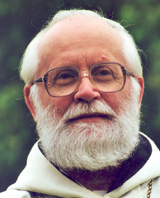 |
|
||
|
|
|||
June 19, 2011 – Trinity Sunday Homily The Holy Scripture describes the creation as the work of a playful God, who takes pleasure in making springs of water gush out from the abyss, in settling the mountains into place and establishing the heavens. Under his hand as under that of a magician, plants and beasts of all kind come to light: “When the heavens were created I was there... playing before him all the while” says the Book of Wisdom (Prof 8,30) “I was there, playing on the surface of his earth” The Book of Genesee had already showed us God playing with clay on the morning of creation and forming in his hands the figure of a human being, then breathing his own breath of life in its nostrils so that it became a living being. Saint Paul, much later, will describe the same reality saying that “God's love has been poured into our hearts through the Holy Spirit which has been given to us”. We have been created at the image of God, from His own Breath, bearing therefore a seed of divine life within us – a seed that is called to grow unceasingly. And since that seed is divine, it has a dimension of eternity. We can say that human being has been created with an infinite capacity of growth. Jesus of Nazareth is the one human being in whom this capacity of growth has reached its full flower. Perfect image of God, He is so totally man (as God wanted man to be), that he is God. Perfectly God and perfectly man, he lived in a human way everything that God is, and that had only been outlined in the great fireworks of creation. In his own being he revealed to us the wealth of relationship, the capacity of love that God is. He shared that experience with us. He spoke to us about his relationship with God. He told us that God was his Father, that His Father and He were united by a mystery of love, which he called the Spirit, and that, in the end, His Father and He were one. He also talked to us of God as a tender mother. He compared himself to a spouse as well as to a shepherd. With all these numerous symbols and images, he allowed us to see something of the richness of the affective life of God. Nevertheless, it is important to remember that God is greater, richer and more beautiful that all that we can say about him and therefore greater than all these symbols and these figures. John, the disciple closer to Jesus’ heart, summed up all that teaching in a brief formula: “God is love”. Later on, a word has been invented to describe this dance of life in God. People began to talk about the Trinity. The Fathers of the Church and the theologians, with various philosophical systems, used the categories of person, nature, relation, etc., and invented a special language that became more and more complex to penetrate the mystery. They spoke, for example, of “circumincession” and other similar strange things. And, evidently, people begin to fight around those words, as theologians know how to do, and they invented various heresies to which they gave more and more exotic names. In the end all those words and all those theological reflections and all the teaching of the Church Fathers don’t say anything more than what John said with three simple words: “God is love”. The wonderful thing for all of us is that we are invited to join that dance of love, to enter into that relationship, to unite ourselves to the Wisdom who "took its delight playing with the sons of Man”. If it is true that God is love, each time we love in truth, we participate in the life of God and in his nature. Whether it is the love between parents and children, between lovers or spouses, between brothers and sisters in a natural family or in a monastic community – every time we love we share in God’s life. When we love each other (and also when we love ourselves as God does), we live the mystery of the Trinity in whom God is, at the same time the Lover, the Loved One and the Love that unites them. Armand VEILLEUX |
1999
2002 - français -
2005 - français
2009 - français
2007 |
||
|
|
|||
